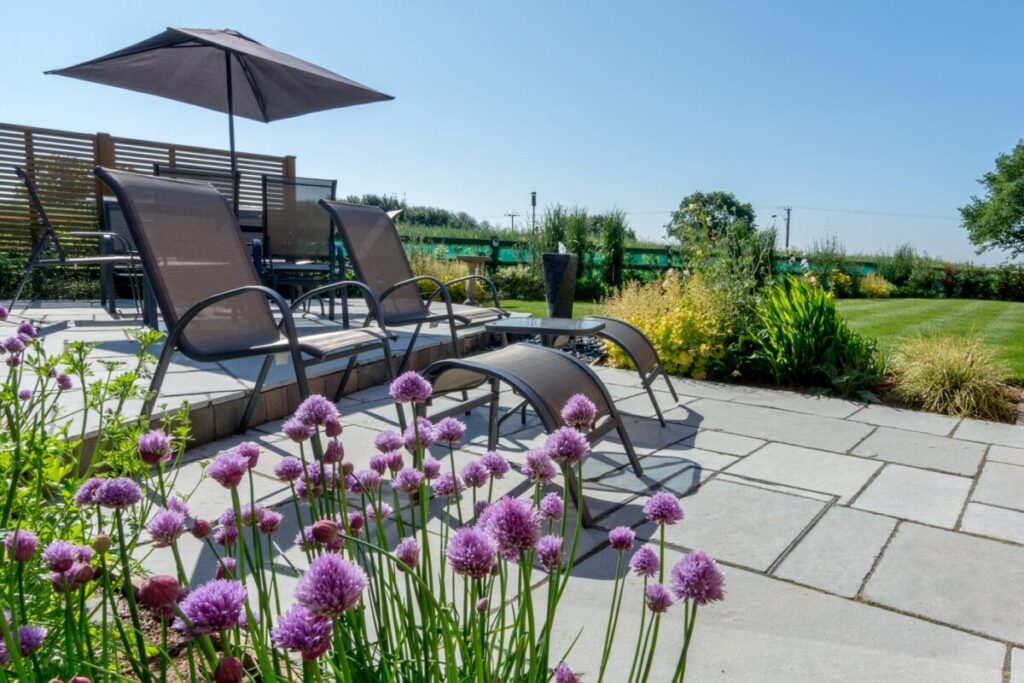
The Problem with Patios
Patios are often the most expensive part of a garden and because of that are often the most long lived part too so it’s worth trying to get your patio ideas ‘right’ before any build commences. The majority of the times we’re called out to consider a patio redesign it’s because the existing patio isn’t, or is no longer, fit for purpose. But there’s an architectural design saying: ‘form ever follows function’; and if you can keep it in mind when you’re thinking about your new patio the odds are improved that your resulting patio will work for you.
So, what does the phrase mean? Today’s garden design interpretation and application is probably much more relaxed than its pure functionalist creator intended but it generally means thinking about what you want a space for (function) before you start thinking about what it will look like (form). Sounds pretty obvious right? You’d probably be surprised at how many patios we come across that didn’t apply the idea!
Take the ‘usual’ positioning of a patio as an example. 9.9 times out of 10 it’s right outside the back (aptly named!) patio doors. Accepting the fact that many people inherit a patio with the house they buy you’d still probably be surprised at how many people, when in control of one do just ‘put’ their patio outside the back doors of their house because that’s where they’ve traditionally been placed, rather than actively making the decision because it’s the best place to suit their own needs. But if, for example, my client is a sun lover who wants to sit in the sun as much as possible and the house casts the patio in shade all day her functional requirements aren’t being met by this particular space.
In this shady, back of house scenario; my sun loving client would be best served by positioning her patio in the place that gets the most sun in her garden with the space being big enough to allow plenty of sunbathing opportunities while offering enough privacy and seclusion from neighbours, for instance, so the planting and things adjacent to the patio may end up being just as important as the patio itself, in terms of meeting its functional goals. My large dinner party hosting clients on the other hand, living in the adjoining house, would appreciate a patio big enough to accommodate a large table and chairs, as near to their kitchen as can be. And for my sun loving clients who also love to throw al fresco dinner parties? For them it’s probably a two patio design because a single patio wouldn’t be able to quite accommodate their dual functional requirements adequately.
The ‘form’ of the patio areas would then begin to fall out of their proposed functions and in these very simplified examples their position has already fallen out of them so now it’s time to consider size, shape, materials, aesthetics, incorporation into the wider garden, lesser functional requirements, etc.
For the dinner party couple, for instance flat, slip free surfaces accommodate tables and chairs best so paviors are the obvious choice here. The size of the patio needs to accommodate their overly large dining table and chairs with enough space to get around them comfortably when they are in use. The position of their patio next to the house requires careful drainage solutions and a robust build. The transitions from the house to the patio, and then from the patio to beyond, need careful consideration both in terms of their look and their usability; the materials and use of them need to aesthetically tick the boxes from viewpoints both outside and inside the house, in all seasons and all of these things, and more, need to be considered with budget very firmly in mind.
It is all a tricky balancing act but if you can remember the phrase you’ll stand a better chance of success with your patio.




